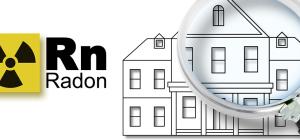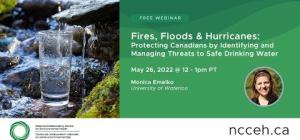
Legionella

Legionella is naturally occurring waterborne bacteria that can survive within building water systems and multiply under ideal conditions that include warm temperature (e.g., 25-45°C), lack of disinfection, and the presence of biofilms. Legionella bacteria are also called opportunistic premise plumbing pathogens (OPPP) and can be present in water storage containers, pipes, or outlets. Exposure usually occurs when contaminated water becomes aerosolized as mists or sprays. Aerosolized particles contaminated with Legionella can be dispersed over a large area, such as from cooling towers atop buildings, which are a major source of outbreaks. Infection occurs via inhalation of Legionella contaminated water droplets or aerosols into the lungs, or accidental aspiration of contaminated water during drinking or chewing on ice.
Legionella can cause illnesses collectively referred to as legionellosis, which includes a flu-like condition known as Pontiac fever, and Legionnaires’ disease, a severe pneumonia with a case fatality rate of about 10%. Smokers, persons over 50, and those with compromised immunity are the most at risk of infection, and cases occur more often in men than women. The reported occurrence of legionellosis is increasing in Canada with more than 600 cases in both 2018 and 2019. The majority of outbreak-related deaths are associated with exposure to Legionella originating in infected contaminated cooling towers, which can expose many people over a large area.
Knowledge gaps remain on how climate change could affect risks of legionellosis but rising ambient temperature in a building’s cold-water system may affect Legionella survival and growth in pipes, fixtures and stored water. Increased cooling demand, supplied by more air conditioners, or use of fountains or water misters, could increase opportunities for exposure.
The resources listed here are intended to highlight:
- Sources of exposure and factors affecting Legionella survival and growth;
- Approaches to managing Legionella risks in buildings;
- Responses to Legionella outbreaks and the corrective actions required;
- Emerging issues such as climate change and how it affects the risk of legionellosis.
Background information on Legionella
- Legionella (Legionnaires’ disease and Pontiac fever) (US Centers for Disease Control and Prevention (US CDC), 2021)
This webpage provides general information on legionellosis including causes, people at increased risk, symptoms, diagnosis, treatment, and prevention. Resources specific to clinicians, health departments and laboratories are provided.
- Living with Legionellaand other waterborne pathogens (Falkinham, 2020)
This review article summarises characteristics of Legionella spp and other OPPPs, their occurrence in premise plumbing, pathways of transmission, monitoring and remediation.
Understanding various sources of exposure
Exposure to Legionella bacteria can occur in a range of settings including homes, workplaces, hospitals, vacation rentals and hotels, events and festivals, and in the wider community associated with cooling towers. Resources explaining transmission risks specific to some settings are listed below:
- Rental properties including vacation rentals: Legionnaires’ disease prevention. Providing a home for guests, not Legionella (US CDC, 2022)
- Hot tubs and pools: Residential hot tubs and pools: Safe water quality (Health Link BC, 2021) (More on pools and recreational water venues can be found here)
- Workplaces and idle water systems: Legionnaires’ disease from water systems left idle during the COVID-19 pandemic (Worksafe BC, 2021) (More on building shutdown and re-opening during the COVID-19 pandemic can be found here).
- Industrial cooling towers: Legionellarisk in evaporative cooling systems and underlying causes of associated breaches in health and safety compliance (Crook et al., 2020)
- Community hospital: Legionnaires’ disease cases at a large community hospital – common and underdiagnosed (Spiegelman et al., 2020).
- Displays of hot tubs, misters, decorative water features, or plumbing fixtures Legionnaires’ disease at temporary events or trade shows – A guide for event coordinators & vendors (Vancouver Coastal Health, 2020)
- Toilet flushing: Transmission of Legionnaires’ disease through toilet flushing (Couturier et al., 2020)
- Water births: Legionellosis following water birth in a hot tub in a Canadian neonate (Barton et al., 2017)
Managing the risks of Legionella in building water systems
The resources below provide information, tips, and examples for controlling Legionella growth and exposure in premises, including how to implement a water management programme (WMP).
- Developing a water management program to reduce Legionella growth and spread in buildings (US CDC, 2021)
This toolkit is a plain language translation of the ASHRAE Standard 188 to assist building owners and managers to evaluate whether and how to develop a Legionella
- Toolkit for controlling Legionella in common sources of exposure (US CDC, 2021)
This toolkit provides actions for public health and building managers to control Legionella in common sources of infection (e.g., potable water, cooling towers, hot tubs, water features), and devices that contain non-sterile water (e.g., irrigation, fire suppression systems, safety showers, ice machines, humidifiers etc.).
- Legionella quick facts (Public Services and Procurement Canada (PSPC), 2019)
This fact sheet sets out the five steps for developing a programme to control the growth of Legionella in building water systems used by PSPC, who operate and maintain a large portfolio of federal buildings.
- Legionella. Who’s addressing the risks in Canada (National Research Council of Canada, Health Canada, and PSPC, 2019)
This report provides an overview of Legionella, risk factors, symptoms, and treatment, and sets out the roles and responsibilities for managing Legionella risks before, during, and after building construction. Provincial and Territorial protocols for Legionella related outbreak prevention, investigation, and control are also listed.
- Management of Legionella in water systems (NASEM, 2019)
This book by the Committee on Management of Legionella in Water System reviews the state of the science on Legionella contamination of water systems, growth, transmission, surveillance, and prevention & control.
- Water quality challenges: Morbidity and mortality associated with building water systems (Environmental Science, Policy & Research Institute, 2018)
This presentation outlines challenges in controlling OPPPs including Legionella, and steps for effective building water management. Case studies for different types (e.g., healthcare facilities) are examined.
- Preventing Legionnaires’ disease: A training on Legionella water management programs (PreventLD) (US CDC and partners, 2018)
This free training course is designed to assist public health professionals, building managers and others to understand how to assess Legionella hazards and develop a Legionella WMP.
Outbreak investigation and control
Identifying the source of a Legionella outbreak is complex. The resources below provide guidance on conducting an investigations and examples of investigations. Some Canadian jurisdictions, listed below, are now using cooling registries to assist in outbreak investigation and control.
- Legionella outbreak investigation and control (BC Centre for Disease Control, 2021)
This guidance document provides evidence-based approaches for epidemiological, environmental, and microbiological investigation and management of cases and outbreaks of legionellosis in BC.
- Legionella (Legionnaires’ and Pontiac Fever) for health departments (US CDC, 2021)
This webpage provides resources to assist in preparation for, and response to, legionellosis outbreaks with advice, tools, and templates for surveillance, investigation, and communication during an outbreak.
- LegionellaDB – A database on Legionella outbreaks (Gonçalves et al., 2021)
This searchable database lists Legionella outbreaks from around the world based on published literature. Users can search for information on outbreaks by location, case numbers, setting, and the identified source of outbreak (More on the development of the database can be found in this article (non-open access).
- Strategies to combat Legionnaires’ disease. Outbreak investigation and preventive policy (NCCEH, 2020)
This webinar recording includes a presentation from Fraser Health on a Legionnaires’ disease outbreak investigation associated with cooling towers in Surrey, BC, and City of Vancouver on the implementation of a registry for cooling towers and decorative water features in the city.
- Legionella and Legionnaires’ disease (legionellosis) (Walkerton Clean Water Centre, 2020)
This resource collection includes a broad range of information on legionellosis prevention through effective water management, sampling, standards, surveillance, and outbreak investigations.
- Did municipal water distribution system deficiencies contribute to a Legionnaires’ disease outbreak in Quincy, IL? (Rhoads et al., 2020)
This article reports on a Legionnaires’ disease outbreak, where changes to municipal drinking water supply disinfectant and corrosion control practices may have led to Legionella growth in the distribution system.
- Multiple sources of the outbreak of Legionnaires’ disease in Genesee County, Michigan, in 2014 and 2015 (Smith et al., 2019)
This article reports how a detailed outbreak investigation identified multiple sources of exposure (hospital associated, residential, and cooling tower associated).
- Legionella: questions and answers, 2nd edition (Public Health Ontario, 2019)
This report lists questions and answers on environmental sampling during a legionellosis outbreak, clinical aspects of an outbreak investigation, and infection prevention and control measures.
- Sampling/environmental assessment videos (CDC, 2018)
These instructional videos provide advice on how to sample taps, cooling towers, hot tubs (spas), and fountains during a legionellosis cluster or outbreak investigation.
- Cooling tower registries and building water management plans: Strategies to combat Legionnaires’ disease (NCCEH, 2019) This blog provides an overview of cooling tower registries in a Canadian context. For examples of Canadian jurisdictions with regulations for building water systems to control Legionella see:
Emerging areas of study
- The collateral effect of COVID-19 on the epidemiology of airborne/droplet-transmitted notifiable infectious diseases in Taiwan (Tang et al., 2022)
This article reports on the increase in legionellosis cases during the COVID-19 pandemic period, in contrast to a decrease in other airborne illnesses. The possible role of building closures during lockdowns is discussed.
- Probabilistic analysis of a French legionellosis outbreak shows potential role of wastewater basin (Wallet et al., 2022)
This article examines possible role of different sources of exposure in a legionellosis outbreak in France, finding that an aerated wastewater basin and cooling towers may have played a role.
- Legionella occurrence beyond cooling towers and premise plumbing (Schwake et al., 2022)
This review article examines the occurrence of Legionella in a range of fresh water and marine sources, rainwater, groundwater and wells, and drinking water treatment and distribution systems.
- Atmospheric dispersion and transmission of Legionella from wastewater treatment plants: A 6-year case-control study (Vermeulen et al., 2021)
This article reports on an identified association between exposure of residents living near a wastewater treatment plant (WWTP) in the Netherlands to WWTP aerosols and occurrence of Legionnaires’ disease.
- Legionnaires’ disease in the time of COVID-19 (Cassell et al., 2021)
This commentary discusses the similarities in initial disease presentation for legionellosis and COVID-19, and the importance of continued surveillance of legionellosis during the pandemic.
- Racial disparities and Legionnaires’ disease (US CDC, 2021)
This website presents data on cases of Legionnaires’ disease by race in the United States, and discusses some of the social determinants that may be contributing to exposure to, or infection by Legionella. (More on this topic can be found in this narrative review by Hunter et al., 2021)
- Critical review: propensity of premise plumbing pipe materials to enhance or diminish growth of Legionella and other opportunistic pathogens (Cullom et al., 2020)
This review article sets out the influence of different premise plumbing materials (metals, plastics etc.), condition, and design on the growth of OPPPs in buildings.
- The influence of climate change on waterborne disease and Legionella: a review (Walker, 2018)
This review article examines the possible influence of climate related factors such as temperature, rainfall intensity, rainfall duration and drought on the incidence of legionellosis.
This list is not intended to be exhaustive. Omission of a resource does not preclude it from having value.
[Last Updated: Jun 2022]








